Want a guided visit? Let's start with three must-do sites then we'll move on to the UNESCO « collections by theme». These group different places linked by history, a person or a cultural practice. The big plus for discovering them without driving? They are all accessible by train and bus.
Bordeaux, Reaching for the Moon
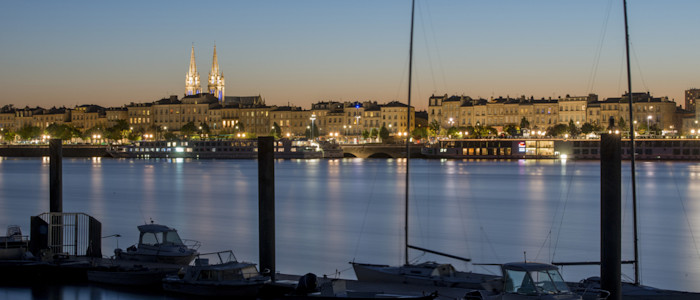
Following the gentle curve of the Garonne - just like a crescent moon, the city that used to be called the "Sleeping Beauty" has woken up and come back larger than life. With such a rich cultural heritage it’s no wonder UNESCO validated its application in 2007: in the same year it became the largest urban area in the world to receive the distinction for such a vast space, from the inner boulevards down to the river, roughly half the total city area.
Even though its busy port has attracted a wide variety of architectural styles over the centuries, especially from England and The Netherlands, most of the buildings in the Nouvelle-Aquitaine capital are incredibly similar with their richly-decorated, and often balconied, classical and neo-classical pale stone façades. Paris aside, Bordeaux has the highest number of protected buildings of any French city.
To explore Bordeaux-Unesco:
www.bordeaux-tourisme.com
www.bordeaux.fr
Getting there by public transport
Bordeaux Saint-Jean station is the main station in the region. The LGV connects Paris to Bordeaux in 2h06. From the south and east of the region, the TGV and TER connect the regional capital to all other destinations. In addition to the public transport network, you can also use self-service bicycles or even scooters.
The Jurisdiction of Saint-Emilion
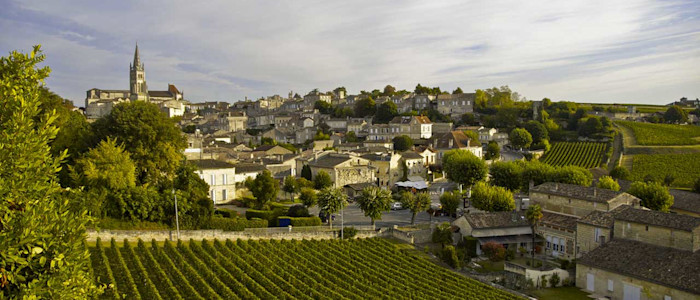
Made up of the same eight areas that King John of England designated when he created the jurisdiction back in the 12th century, it still forms in the words of UNESCO “a remarkable example of historical, viticultural countryside that has survived intact" and "is the perfect illustration of intensive grape production in a clearly delineated region". In 1999 the area became the first viticultural land to be listed a World Heritage Site.
Winemaking was introduced here very early on by the Romans, first to plant the vines. Wine production intensified in the Middle Ages and hasn’t stopped growing since, gaining an international reputation for its fine vintages (grands crus) and equally fine châteaux. A large number of historical monuments, such as the monolithic church dug into the chalk cliff in Saint-Emilion, or the impressive Pierrefitte Menhir in Saint-Sulpice-de-Faleyrens add to the overall charm of this truly unique agricultural landscape.
For everything you need to know about the Saint-Emilion Jurisdiction:
www.saint-emilion-tourisme.com
Getting there by public transport
The station of Saint-Émilion is located on the line 33 Bordeaux-Sarlat. To get to the village, it takes 17 minutes on foot (9 minutes by bike). This information sheet (in French) produced by the Region and the TER (regional train) presents the destination.
The Abbey of Saint-Savin-sur-Gartempe
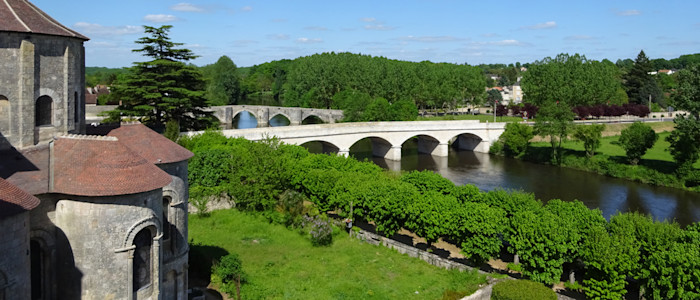
This jewel of Roman art, located to the east of Poitiers, found its way onto the UNESCO list in 1983 as a "masterpiece of man's creative genius" and a "remarkable testament to a vanished civilization". André Malraux christened it the "Roman Sixtine Chapel" for its 11th and 12th century mural paintings.
These frescos, commissioned by the Benedictine monks have remained remarkably intact over the centuries. Spread out across the immense barrel vault of the nave, they comprise 61 scenes (of which 44 are still visible today) that retrace the most important episodes of the Old Testament. The adjoining Church Hall and monastic buildings are also definitely worth a look.
To visit the Abbey of Saint-Savin: www.abbaye-saint-savin.fr
Getting there by public transport
To contemplate the frescoes of the Abbey of Saint-Savin-sur-Gartempe, a TER takes you in 45 minutes from Potiers. The abbey is only one minute away from the station!
The prehistoric sites and painted caves of the Vézère Valley
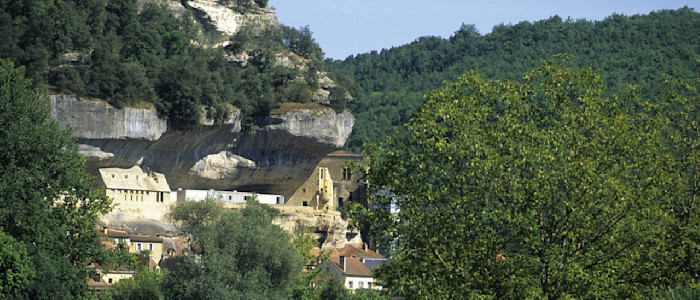
In 1979, 15 sites in Black Perigord were listed World Heritage sites. All illustrate the important role played by the Vézère Valley in understanding prehistory. This valley alone comprises no fewer than 147 prehistoric sites dating back to the Palaeolithic era and 25 painted caves. From an ethnological, anthropological and aesthetic point of view these prehistoric works of art are of outstanding significance, especially the cave paintings.
If Lascaux stands out for the accuracy, observation, richness of colour and lively finish of its animal figures, the list is also an invitation to visit other sites such as the Cave of Combarelles - where 800 Quatenary engravings of wildlife in the Ice Ages sit side by side with schematic drawings representing early humans, or the sheltered rock face at Cap-Blanc with its animal-sculpted frieze.
To find out more about prehistory in the Dordogne and to visit the sites:
Centre for Prehistory: www.pole-prehistoire.com
National Prehistory Museum: https://en.musee-prehistoire-eyzies.fr
Visits to the Eyzies sites: www.sites-les-eyzies.fr
The Cro-Magnon Shelter: www.abri-cromagnon.com
The Grand Roc Cave and Laugerie Basse: www.lascaux.fr
Cro de Granville or Cave of the Hundred Mammoths in Rouffignac: www.grottederouffignac.fr
The Rock of Saint-Cirq (or The Sorcerer’s Cave): www.grottedusorcier.com
La Madeleine, troglodytic village: www.la-madeleine-perigord.com
Getting there by public transport
The village of Les Eyzies is sometimes called the world capital of prehistory. Situated on line 34 of the TER between Périgueux and Agen, it is also a territory committed to the preservation of its environment. The Vézère valley has been awarded the Grand Site de France® label by the Ministry of the Environment and is a UNESCO biosphere reserve. A whole page presents alternatives to the car. And also this fact sheet (in French) on the secrets of line 34.
The Santiago de Compostela routes in France
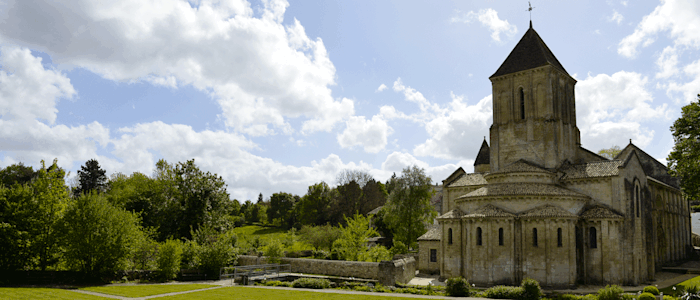
Southwest France is where all the main Santiago de Compostela pilgrim routes from all across Europe converge. It’s in Nouvelle-Aquitaine, that each of the main paths - Paris, Vézelay, Le Puy-en-Velay and Arles – come to cross the Pyrenees en route for Spain and its sacred destination, Santiago. The rich heritage along these routes, witness to the passage of countless pilgrims, includes cathedrals, churches, hospices, basilicas and abbeys. Listed World Heritage of Humanity in 1998, it joined its cousins the already listed Santiago de Compostela routes in Spain.
Seventy-one pilgrimage-associated features were selected for their geographical diversity, their testimony to the chronological development of pilgrimages between the 11th and 15th centuries, or for their fundamental architectural purposes, such as the ancient pilgrims’ hospital in Pons or the Porte Saint-Jacques in Saint-Jean-Pied-de-Port. The Heritage also lists seven stages along the route from Le Puy, covering nearly 160km of the path, including a stretch from Aroue to Ostabat-Asme in our region.
Monuments listed in Nouvelle-Aquitaine:
- Agen: Saint-Caprais's Cathedral
- Aire-sur-l'Adour: Church of Sainte-Quitterie
- Aulnay: Saint-Peter's Church
- Bayonne: Saint-Mary's Cathedral
- Bazas: Ancient Cathedral of Saint-John-the-Baptist
- Bordeaux: Saint-Seurin's, Saint-Michael's Basilica and Saint-Andrew's Cathedral
- Le Buisson-de-Cadouin: Abbey Church of Our-Lady of the Nativity
- L'Hôpital-Saint-Blaise: Saint-Blaise's Church
- Melle: Church of Saint-Hilaire
- Mimizan: Bell-tower porch of the old church
- Oloron-Sainte-Marie: Saint-Mary's Church
- Périgueux: Saint-Front's Cathedral
- Poitiers: Church of Saint-Hilaire-le-Grand
- Pons: Ancient hospital for Pilgrims
- Saint-Avit-Sénieur: Church of Saint-Avit
- Saint-Jean-d'Angély: Royal Abbey of Saint-John-the-Baptist
- Saint-Jean-Pied-de-Port: Porte Saint-Jacques
- Saint-Léonard-de-Noblat: Saint-Leonard's Church
- Saint-Sever: Saint-Sever Abbey
- Saintes: Church of Saint-Eutrope
- La Sauve: ancient Abbey of Notre-Dame de la Sauve Majeure and Saint-Peter's Church
- Sorde-l'Abbaye: Saint-John's Abbey
- Soulac: Church of Notre-Dame-de-la-Fin-des-Terres
To find out more about Compostela:
The Santiago de Compostela routes, world heritage website: www.cheminscompostelle-patrimoinemondial.fr
The Agency for interregional cooperation and Santiago de Compostela routes (ACIR) www.chemins-compostelle.com
Getting there by public transport
It all depends on where you want to go, but most of the towns and villages on the Camino de Santiago are accessible by train or regional bus.
The Cordouan lighthouse

The Cordouan lighthouse also called "the Versailles of the seas" was inscribed in 2021 on the prestigious UNESCO World Heritage List.
Located a few kilometers from the sea, it has stood proudly since 1611 in the middle of the Gironde estuary. It embodies the creative genius of men and the major phases in the history of lighthouses.
The Cordouan lighthouse is a true architectural masterpiece: both maritime signaling work and a remarkable monument of the open sea.
Did you know that it is the only lighthouse to have been built to take the place of the mythical lighthouse of Alexandria?
Beyond its role in coastal lighting, it is also becoming an innovation laboratory for French engineering__. In particular, Augustin Fresnel is testing his stepped lens (the Fresnel lens) for the first time, now used by most lighthouses around the world.
Find out more about the Cordouan Lighthouse by reading our article
OR Phare-de-cordouan.fr/en/
Getting there by public transport
The TER 42 line connects Bordeaux to La Point de Grave, opposite Royan. Get off at Le Verdon-sur-Mer, and go to the Port-Médoc pier (30 minutes walk) where the two companies providing the tour are located. Please note that you need to book your ticket.
You can consult these two information sheets (in French), one on the secrets of line 42, the other on the visit of Soulac-sur-Mer from the station.





